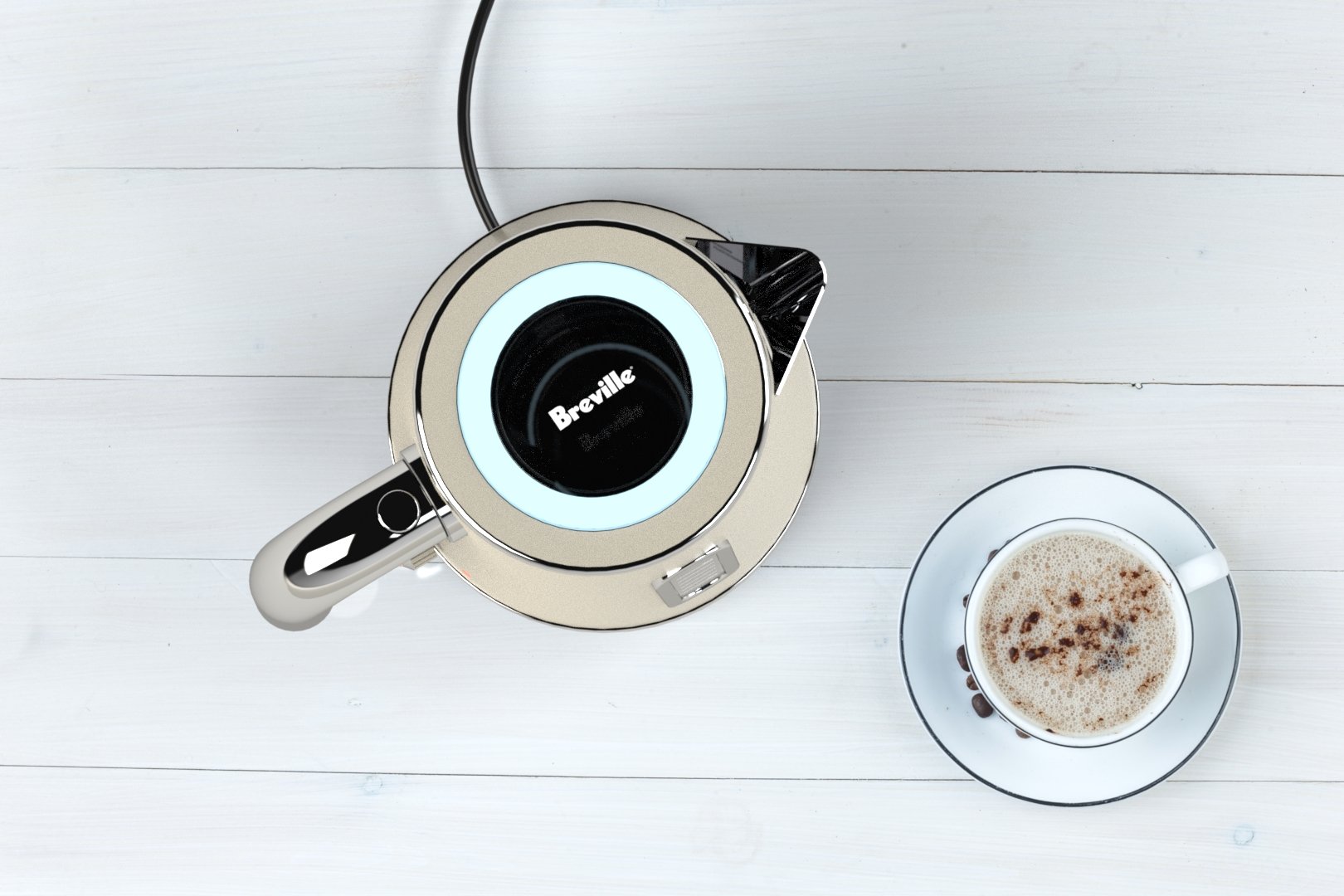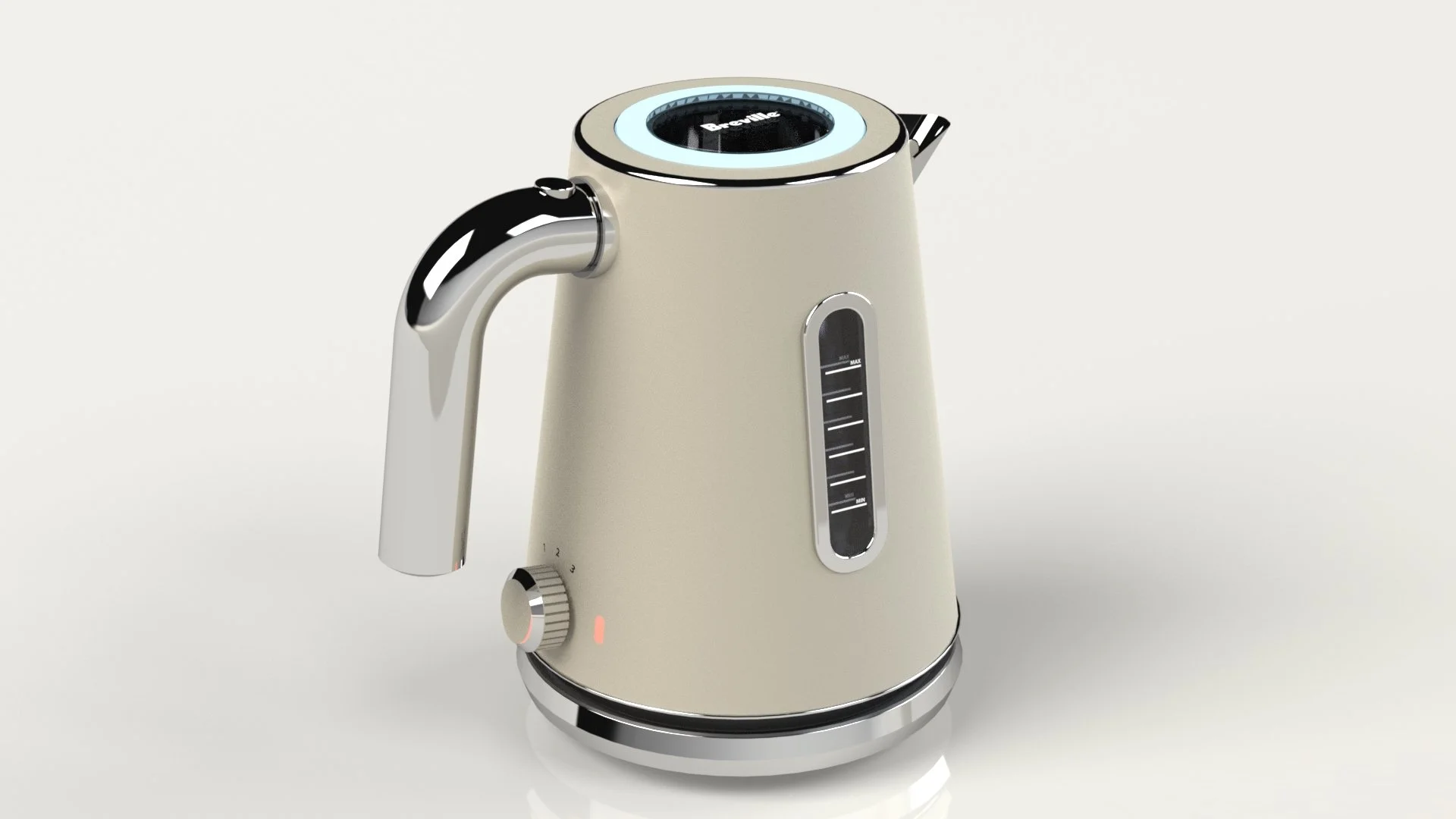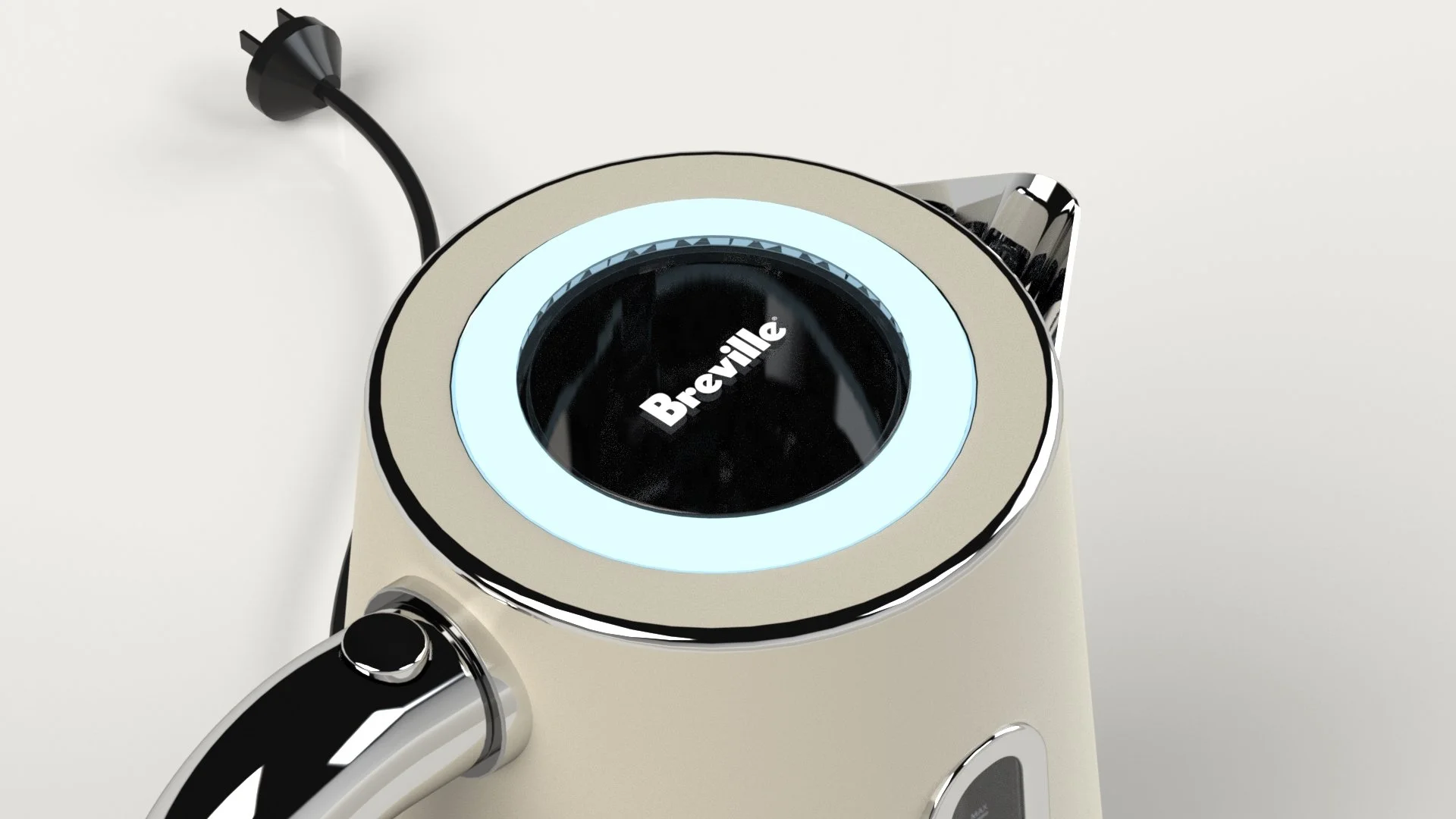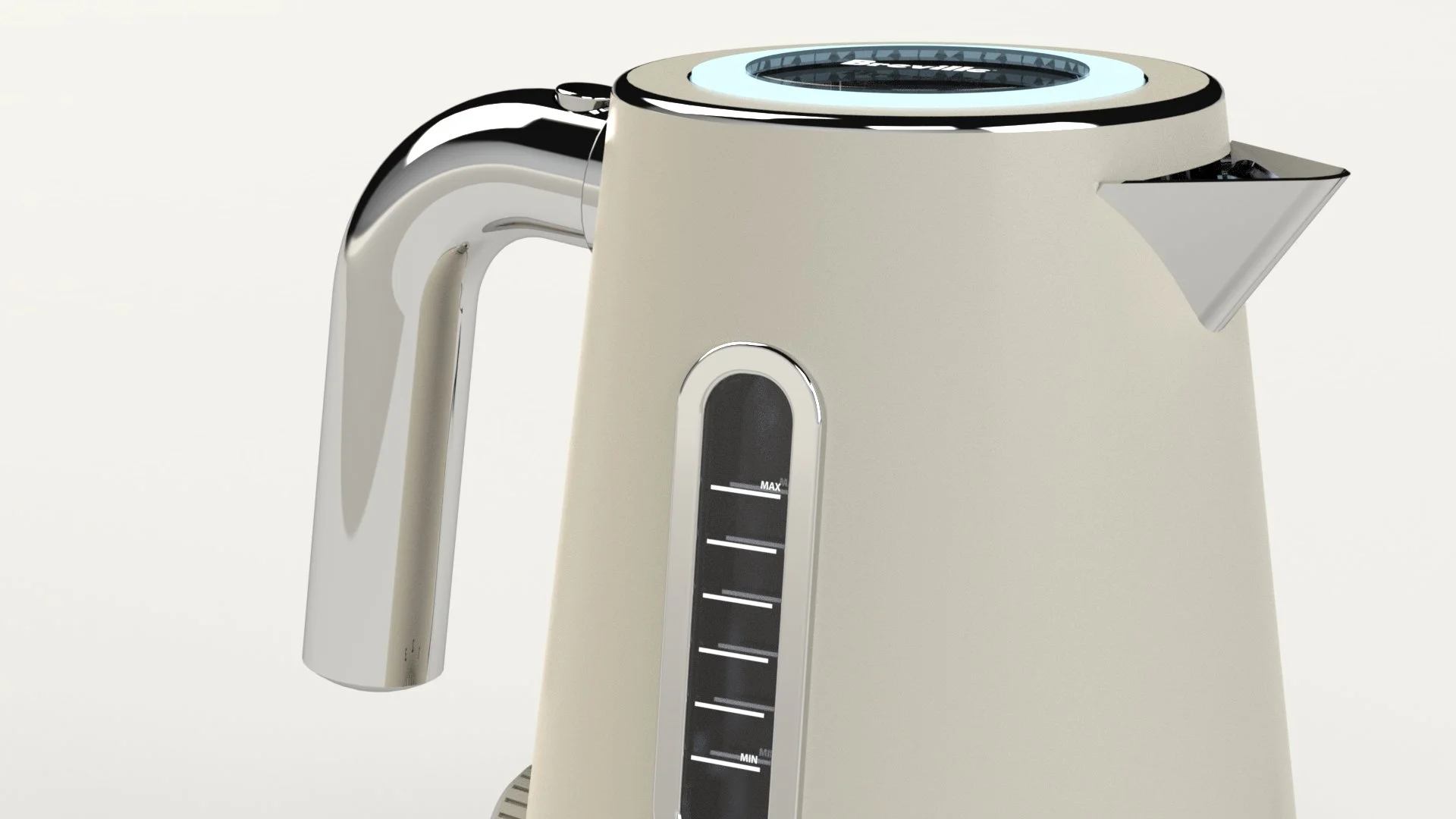
Reto
Kettle
Designing a kettle for Breville
Project Overview
The goal is to design a kettle that transcends the mere function of boiling water. By seamlessly integrating smart features, it aims to transform the mundane task into a novel and engaging experience, all while embracing sustainability. This kettle strives to empower users to make eco-friendly choices effortlessly, without requiring conscious effort, all while maintaining alignment with the Breville brand.
Target Market
The target market for this product is the late twenties and above. This kettle is aimed at individuals who find the process of boiling water to be monotonous and would like a more luxurious and enjoyable experience. The product is also targeted towards those who are looking for more sustainable, energy-friendly alternatives.
The Problem
Timeline
On average Aussies spend an average of $52 on a new kettle. When it comes to deciding about features, 1:3 opted for a cordless model and a fifth picked something that would complement their kitchen aesthetics.
Prototyping
Solo Student project UNSW industrial design (Breville redesign)
Kettles are often deemed unsustainable due to their high power consumption and relatively brief lifespan.
Electric kettles are notorious for their high electricity consumption, typically ranging from 1,200 to 1,500 watts during operation. Hence, maximizing efficiency becomes paramount in their usage. Unfortunately, households tend to replace their kettles every 3 to 5 years, although these appliances are designed to last 10 to 12 years on average. This premature turnover not only contributes to waste but also underutilises the full lifespan potential of these essential kitchen tools.
The Solution
Experience sustainability redefined with our modern retro kettle, ingeniously enhanced with smart features to elevate Eco-friendly living.
White paper research
Kettles and their consumption
The high energy consumption of a kettle can be attributed to two main factors: the heating element and the process of converting electrical energy into heat.
What makes a kettle’s electrical consumption so high:
Heating Element
Rapid Boiling
Inefficient Heat Transfer
Standby Power
Competitor Analysis
Here are some smart ways to reduce the energy consumption of your kettle:
Choose an energy-efficient kettle.
Boil only the required amount of water.
Use the correct kettle size.
Regularly descale.
Consider alternative heating methods.
Be mindful of standby power.
User Interviews
Users mostly care more about how the kettle looks over sustainability and functionality.
Based on interviews with users, it's apparent that when selecting a kettle, functionality and suitability take a back seat to its aesthetic compatibility with home decor. Moreover, instead of solely focusing on enhancing sustainability features, it may be more impactful to consider user behaviour patterns and encourage subconscious sustainable decision-making.
Interesting finding: Most people I interviewed stated that when they are using their kettle, they often turn it on to go away and when they come back, they always end up turning it back on because they think it is no longer hot.
Key Insights
Change in Direction
Moved away from making the kettle more sustainable looked into users’ behavioural patterns and encouraged subconscious sustainable decision-making.
I conducted this approach based on my user research findings, which revealed that many people prioritise the appearance of a kettle over its sustainability when making a purchase decision.
Ideation
10 week project (12 February - 19 April, 2023)
The most sought-after kettles excel in their simplicity, offering 1 or 2 simple features while aesthetically being versatile enough to complement a myriad of home styles.
How might we improve the visual aesthetics of kettles to seamlessly integrate into any household, while simultaneously enhancing sustainability by integrating smart and user-friendly features?
My Role
Handle design failed to consider ergonomics.
In these models, I aimed to delve deeply into form and ergonomics. However, upon closer consideration of ergonomics, it became evident that they fell short, placing the wrist and hand in awkward positions during pouring. Exploring form further, I realised that meticulous attention to width and height was crucial for optimal design.
Final Design
Thank you for reading!
For more take a look at my other projects











